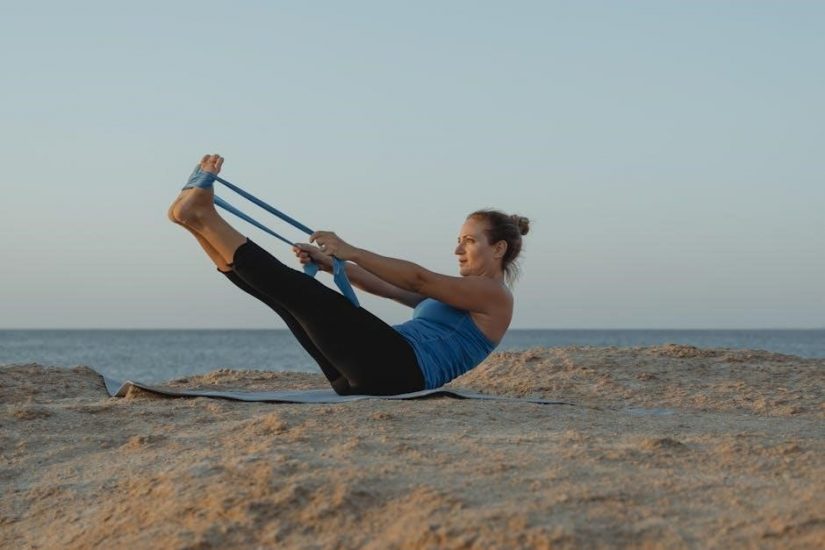The FlexBar is a versatile tool for rehabilitation and strengthening, offering exercises like the Tyler Twist and eccentric loading to address conditions such as tennis elbow and RSI effectively.
What is FlexBar?
The FlexBar is a flexible, durable exercise bar designed for rehabilitation and strengthening. It is commonly used in physical therapy to target forearm, wrist, and elbow muscles. Made from high-quality materials, it offers progressive resistance levels, with different colors indicating varying stiffness. Its unique design allows for exercises like the Tyler Twist and eccentric loading, making it ideal for conditions such as tennis elbow and RSI. Portable and easy to use, the FlexBar is a popular tool for both clinical and home-based rehabilitation programs, promoting muscle strength and flexibility effectively.
Why Use FlexBar for Rehabilitation and Strengthening?
The FlexBar is highly effective for rehabilitation and strengthening due to its ability to provide targeted eccentric loading, which helps lengthen muscles and improve flexibility. It is particularly beneficial for conditions like tennis elbow and RSI, as it strengthens the forearm and wrist muscles without surgery or heavy equipment. The FlexBar’s progressive resistance levels, indicated by different colors, allow users to gradually increase intensity as they heal. Its portability and ease of use make it ideal for both clinical and home-based therapy. Additionally, it is cost-effective and clinically validated, making it a preferred choice for physical therapists and patients alike.

Specific FlexBar Exercises for Rehabilitation

The FlexBar offers targeted exercises like the Tyler Twist, eccentric loading, and progressive resistance to enhance flexibility and strength during recovery. These exercises are highly effective for rehabilitation.
The Tyler Twist Exercise
The Tyler Twist is a key FlexBar exercise for rehabilitation, particularly effective for conditions like tennis elbow and RSI. To perform it, grasp the FlexBar with the affected arm, extending your wrist. Use the opposite hand to twist the bar, controlling the movement carefully. This exercise targets the forearm and wrist muscles, promoting eccentric loading and strengthening; It’s essential to execute the twist slowly and maintain control during the release phase. Regular practice of the Tyler Twist can significantly improve flexibility and reduce pain in the affected areas, making it a valuable tool for injury recovery and muscle engagement.
Eccentric Loading for Wrist and Forearm
Eccentric loading with the FlexBar is a highly effective method for strengthening the wrist and forearm muscles, particularly beneficial for rehabilitation. This technique involves slowly lengthening the muscles under tension, enhancing strength and flexibility. The FlexBar’s design allows for controlled resistance, enabling users to perform eccentric exercises safely. By twisting the bar with one hand while resisting with the other, individuals can target the forearm and wrist effectively. Regular practice improves muscle endurance, reduces pain, and promotes healing, making it an excellent option for conditions like tennis elbow and RSI. Consistent use enhances wrist and forearm resilience, aiding in long-term recovery and injury prevention.
Progressive Resistance with FlexBar Colors
FlexBar exercises utilize a color-coded system to provide progressive resistance, allowing users to gradually increase intensity as they strengthen. Starting with the red FlexBar, which offers the lightest resistance, individuals can progress to green, blue, and black bars as their strength improves. This structured approach ensures a safe and effective rehabilitation process. By advancing through the colors, users can challenge their muscles without risking overexertion, promoting steady growth in wrist and forearm strength. This method is particularly beneficial for rebuilding resilience in injured tissues and preventing future strain or injury.

Benefits of FlexBar for Common Injuries
FlexBar exercises effectively address injuries like tennis elbow and RSI by strengthening forearm muscles and promoting tendon health through targeted, low-impact movements, enhancing recovery and resilience.
Rehabilitation for Tennis Elbow (Lateral Epicondylitis)
The FlexBar is highly effective for rehabilitating tennis elbow, a condition causing pain on the outer elbow due to strained forearm extensors. By using eccentric loading, the FlexBar strengthens these muscles, promoting tendon repair. Exercises like the Tyler Twist target the extensor muscles, improving grip strength and reducing pain. Starting with the red FlexBar and progressing to higher resistance levels ensures gradual strengthening. Consistent use, combined with ice therapy for soreness, helps restore function and prevent recurrence. This structured approach makes the FlexBar a valuable tool for managing and overcoming lateral epicondylitis effectively.
Relief from RSI (Repetitive Strain Injury)
The FlexBar is an excellent tool for alleviating symptoms of RSI, particularly numbness and tingling in the hands and wrists. By focusing on eccentric loading, it helps lengthen tight muscles and improve circulation. Exercises such as the Tyler Twist and forearm rotations target the affected areas, reducing strain and promoting recovery. Used as a rehab device, the FlexBar helps restore muscle balance and flexibility. Combining it with other therapies, like trigger point massage, enhances relief. Regular use, following structured routines, can significantly reduce RSI discomfort and prevent future episodes, making it a valuable addition to rehabilitation plans.
Strengthening Forearm Muscles
The FlexBar is highly effective for strengthening forearm muscles, which are crucial for supporting wrists and elbows. By utilizing eccentric loading, it targets the extensor muscles, improving grip strength and endurance. The progressive resistance levels, indicated by different FlexBar colors, allow users to gradually increase intensity as muscles strengthen. Regular exercises, such as wrist curls and twists, enhance muscle balance and reduce the risk of injury. Strengthening the forearms with the FlexBar also improves overall joint stability, making it an essential tool for both rehabilitation and preventive care, especially for individuals with repetitive strain injuries or tennis elbow.

How to Progress with FlexBar Exercises
Start with the red FlexBar and advance to higher resistance levels as strength improves. Progress when 15 reps become easy, ensuring gradual muscle adaptation and injury prevention.
Starting with the Red FlexBar
Begin with the red FlexBar, the lightest resistance level, to minimize strain and allow proper adaptation. Perform 2 sets of 15 repetitions twice daily, focusing on controlled movements. Gentle progression is key to avoid overexertion. Once 15 reps become effortless, gradual advancement to higher resistance levels, such as blue or green, is recommended. Proper technique and consistent practice ensure safe and effective strengthening. Ice can be applied to manage any initial soreness, promoting recovery and readiness for further progression.
Advancing to Higher Resistance Levels
Progress to higher resistance levels, such as blue or green FlexBars, once the current level becomes comfortable. This gradual approach ensures continued strengthening without risking injury. Each color represents increased resistance, building forearm and wrist strength effectively. Monitor progress during sessions, ensuring proper form and avoiding excessive fatigue. Advance only when 2 sets of 15 reps feel manageable, allowing muscles to adapt naturally. This methodical progression enhances muscle endurance and prepares for more challenging exercises; Always maintain focus on technique to maximize benefits and prevent setbacks.
Combining with Other Rehab Techniques
Enhance recovery by integrating FlexBar exercises with other therapies, such as ice therapy for soreness, massage for muscle relaxation, and physical therapy for targeted mobilization. Combining these methods maximizes the effectiveness of rehabilitation. For example, ice reduces inflammation while massage improves circulation, supporting muscle repair. Additionally, incorporating stretching and splinting can further protect joints and promote healing. This holistic approach strengthens the musculoskeletal system comprehensively, reducing the risk of re-injury. By blending FlexBar exercises with complementary techniques, individuals can achieve faster and more sustainable recovery outcomes, addressing both the symptoms and root causes of injury.

Safety and Precautions
If pain occurs during FlexBar exercises, stop immediately and consult a healthcare provider. Use ice to reduce soreness and avoid overexertion to prevent injury recurrence.
When to Stop and Consult a Healthcare Provider
If you experience pain during FlexBar exercises, stop immediately. Pain or discomfort indicates potential overexertion. If numbness, tingling, or severe pain persists, consult a healthcare provider. Mild soreness is normal, but sharp pain warrants medical advice. Ice can help reduce inflammation, but if symptoms worsen, seek professional guidance.properly monitor progress and avoid exacerbating injuries.
Using Ice for Soreness
Applying ice to the affected area can help reduce soreness after FlexBar exercises. Use an ice pack wrapped in a cloth to avoid direct skin contact. Apply ice for 10–15 minutes, 2–3 times daily, to minimize inflammation and muscle spasms. Ice therapy is particularly beneficial for conditions like tennis elbow or RSI, aiding in recovery. Always prioritize ice after exercises if soreness occurs, ensuring proper healing and preventing further discomfort.

Real-World Applications and Case Studies
FlexBar exercises are widely used in rehabilitation and strengthening programs, offering practical solutions for conditions like tennis elbow and RSI. Clinical studies highlight their effectiveness in improving forearm strength and reducing injury recovery time, making them a preferred choice for both therapists and patients seeking non-invasive treatment options.
Success Stories with FlexBar for Tennis Elbow
Many individuals have reported significant improvement in tennis elbow symptoms using the FlexBar. A user with a two-year history of the condition found relief after incorporating the Tyler Twist exercise, noting reduced pain and improved wrist mobility. The eccentric loading feature of the FlexBar has also been praised for its ability to strengthen forearm muscles and prevent recurrence. These success stories highlight the FlexBar’s effectiveness as a non-invasive, convenient tool for rehabilitation, helping patients regain function and reduce discomfort in daily activities and sports performance.
Clinical Studies on FlexBar Effectiveness
Clinical studies have demonstrated the FlexBar’s effectiveness in rehabilitation, particularly for conditions like tennis elbow. A study comparing FlexBar exercises with plyometric exercises showed significant improvements in pain reduction and functional recovery. Patients using the FlexBar experienced enhanced wrist and forearm strength, with eccentric loading being a key factor in muscle repair. The device’s progressive resistance system was also praised for its ability to adapt to individual recovery stages. These findings underscore the FlexBar’s role as a evidence-based tool for effective rehabilitation and injury prevention, supported by both clinical research and patient outcomes.

Downloading FlexBar Exercise Guides
Reliable FlexBar exercise guides are available as PDF resources online, offering structured routines, sets, and repetitions for effective rehabilitation and strengthening programs.
Where to Find Reliable PDF Resources
Reliable FlexBar exercise guides in PDF format can be found on official websites, medical supplier portals, and platforms like ResearchGate. Many physical therapy clinics offer downloadable resources tailored for specific injuries, such as tennis elbow or RSI. Additionally, manufacturers like Medic Therapeutics provide detailed manuals and exercise routines. When searching, ensure the source is reputable and medically endorsed to guarantee safety and effectiveness. These guides often include step-by-step instructions, images, and progression tips, making them invaluable for home rehabilitation programs. Always consult a therapist before starting any new routine.
Following Structured Exercise Routines
Your therapist may recommend performing 2 sets of 15 repetitions twice daily, starting with the red FlexBar and progressing to higher resistance levels. Each exercise, such as the Tyler Twist, should be done slowly, with 4 seconds per repetition and 30 seconds of rest between sets. Proper technique is crucial to avoid injury. Follow the provided PDF guides for step-by-step instructions and visual cues. Consistency is key for rehabilitation success. If pain occurs, stop and consult your healthcare provider. Use ice for soreness and ensure adequate rest between sessions for optimal recovery.
The FlexBar is a highly effective tool for rehabilitation and strengthening, particularly for conditions like tennis elbow and RSI. Its versatility allows for exercises such as the Tyler Twist and eccentric loading, which target specific muscle groups. Starting with the red FlexBar and progressing to higher resistance levels ensures a structured approach to recovery. By following the provided PDF guides and maintaining consistency, users can achieve significant improvements. Always prioritize proper technique and consult a healthcare provider if pain occurs. Ice and rest are essential for managing soreness during the rehabilitation process.
